Are you or someone you care about struggling with anemia? Understanding how to effectively manage this condition can make a significant difference in improving overall health and energy levels. In our upcoming article, we'll explore a comprehensive anemia management plan that covers dietary changes, supplements, and lifestyle adjustments to combat fatigue and boost vitality. Join us as we delve into these practical strategies that can empower you to take control of your healthâread more to discover valuable insights!

Patient Information and Medical History
Anemia management plans require detailed patient information and comprehensive medical history to effectively tailor treatments. Patients diagnosed with iron-deficiency anemia (e.g., hemoglobin levels below 13 g/dL for men, below 12 g/dL for women) must provide demographic details such as age, sex, and race to identify risk factors. A thorough medical history should include previous anemia diagnoses, underlying causes (e.g., chronic diseases like kidney disease or gastrointestinal disorders), dietary intake of iron-rich foods (such as red meat, beans, or leafy greens), and any previous treatments (e.g., oral or intravenous iron supplementation). Additionally, a review of current medications is essential to identify potential drug interactions that could exacerbate anemia symptoms, such as the use of anticoagulants or proton pump inhibitors. Finally, lifestyle factors (such as dietary habits, menstrual history for women, and exercise levels) play a significant role in managing anemia effectively.
Diagnosis and Severity of Anemia
Anemia, characterized by a reduction in red blood cells (RBCs) or hemoglobin levels, presents a significant health challenge, with a diagnostic threshold often set below 13 g/dL for men and 12 g/dL for women. Individuals may experience varying degrees of severity: mild anemia (hemoglobin levels between 10 to 12 g/dL), moderate anemia (hemoglobin levels between 7 to 10 g/dL), and severe anemia (hemoglobin levels below 7 g/dL). Common causes include nutritional deficiencies (e.g., iron, vitamin B12, folate), chronic diseases (such as kidney disease or cancer), and genetic disorders (like sickle cell anemia or thalassemia). Symptoms, including fatigue, pallor, shortness of breath, and cognitive impairment, often correlate with the anemia's severity, impacting quality of life and functional capacity. Comprehensive assessments, including complete blood counts (CBC), iron studies, and reticulocyte counts, are critical for accurately diagnosing anemia and determining the most effective management strategies tailored to individual needs.
Treatment Goals and Objectives
Anemia management plans focus on treatment goals and objectives aimed at restoring healthy hemoglobin levels and improving overall well-being for patients. Essential objectives include identifying underlying causes such as iron deficiency, vitamin B12 deficiency, or chronic disease, and implementing appropriate interventions. Treatment may involve dietary changes to increase iron-rich food intake like spinach, legumes, and meats, alongside potential supplementation, with oral iron often prescribed in doses of 50-100 mg per day. For severe cases, intravenous iron therapy or blood transfusions may be necessary, particularly in hospitals. Regular monitoring of hemoglobin levels through complete blood counts, targeting levels of 12-16 g/dL for females and 13.5-17.5 g/dL for males, is critical to assess treatment effectiveness. Collaborative care involving primary care physicians, hematologists, and nutritionists ensures a comprehensive approach to managing anemia while addressing any co-existing medical conditions to enhance patient quality of life.
Recommended Interventions and Medications
Anemia management plans focus on improving hemoglobin levels and addressing underlying causes. Recommended interventions often include dietary adjustments, such as increasing iron-rich foods (e.g., red meat, beans, fortified cereals) and vitamin C sources (e.g., citrus fruits) to enhance iron absorption. Medications like ferrous sulfate, typically administered in 325 mg doses, may be prescribed to supplement iron intake. In cases of chronic anemia, such as iron deficiency anemia or anemia of chronic disease, healthcare providers might consider erythropoiesis-stimulating agents, particularly in patients undergoing dialysis or with cancer-related anemia. Regular monitoring of blood work, specifically complete blood counts, is critical to assess treatment efficacy and to adjust interventions as needed. Education on symptoms of anemia, such as fatigue or pallor, is crucial for self-management and timely reporting to healthcare professionals.
Follow-up and Monitoring Plan
Anemia management requires a systematic follow-up and monitoring plan to ensure effective treatment and improvement in hemoglobin levels. Regular blood tests, such as complete blood count (CBC), should be scheduled every 4 to 6 weeks initially, providing critical data regarding red blood cell count, hemoglobin concentration, and hematocrit levels. Clinical assessments must focus on symptoms like fatigue, weakness, or paleness, especially in cases associated with chronic conditions like kidney disease or gastrointestinal disorders. Nutritional evaluation is essential; incorporating iron-rich foods, such as spinach, legumes, and red meat, alongside vitamin C sources like oranges and strawberries can enhance iron absorption. Depending on the patient's response, adjustment of iron supplementation dosage or type may be necessary, particularly if they are taking ferrous sulfate or other formulations. Referral to a specialist may be warranted if anemia persists beyond three months despite adherence to the management plan, guaranteeing comprehensive evaluation for underlying pathologies.

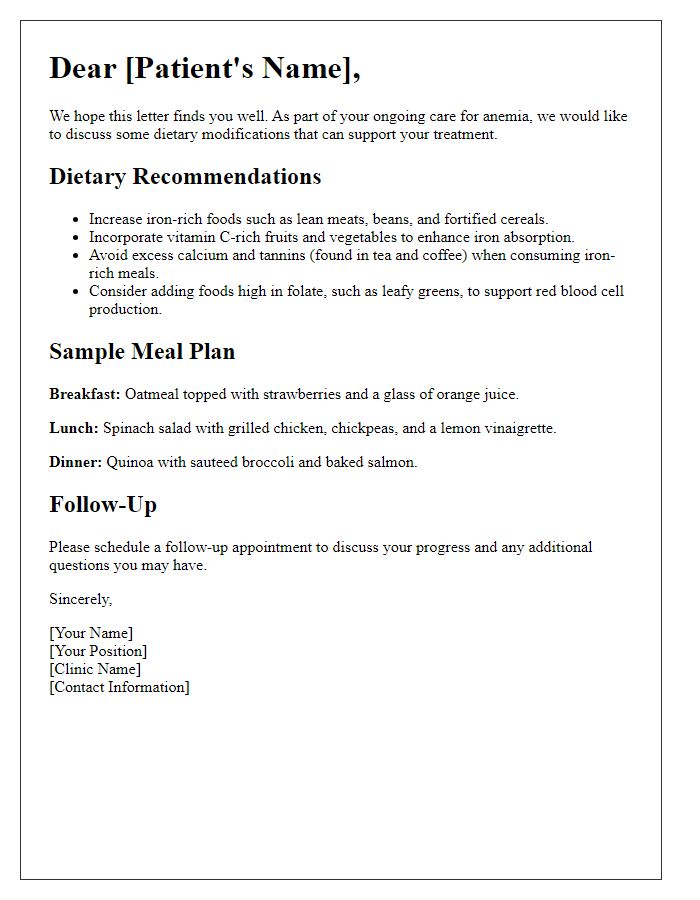
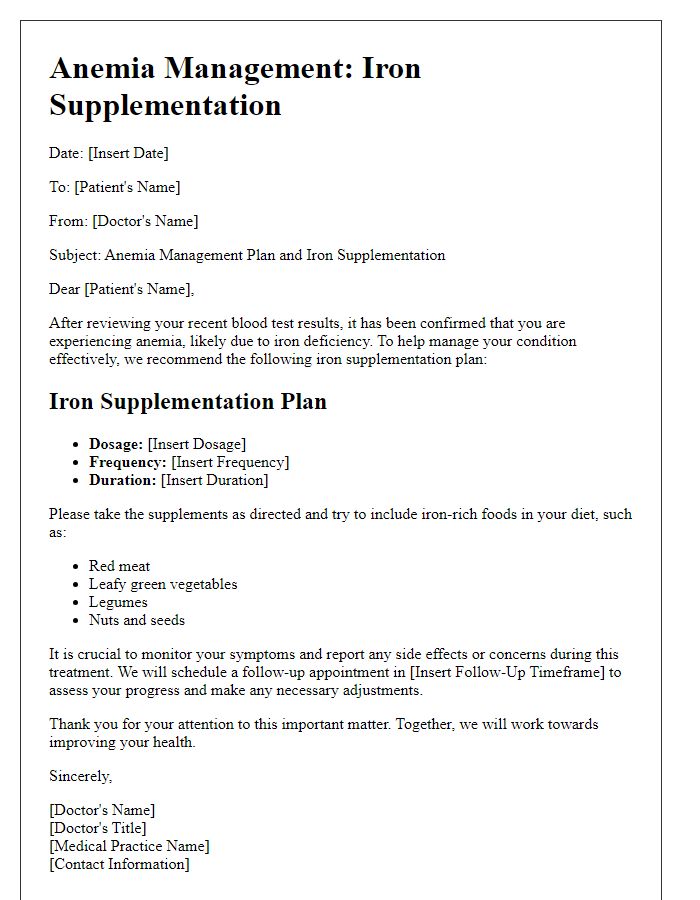
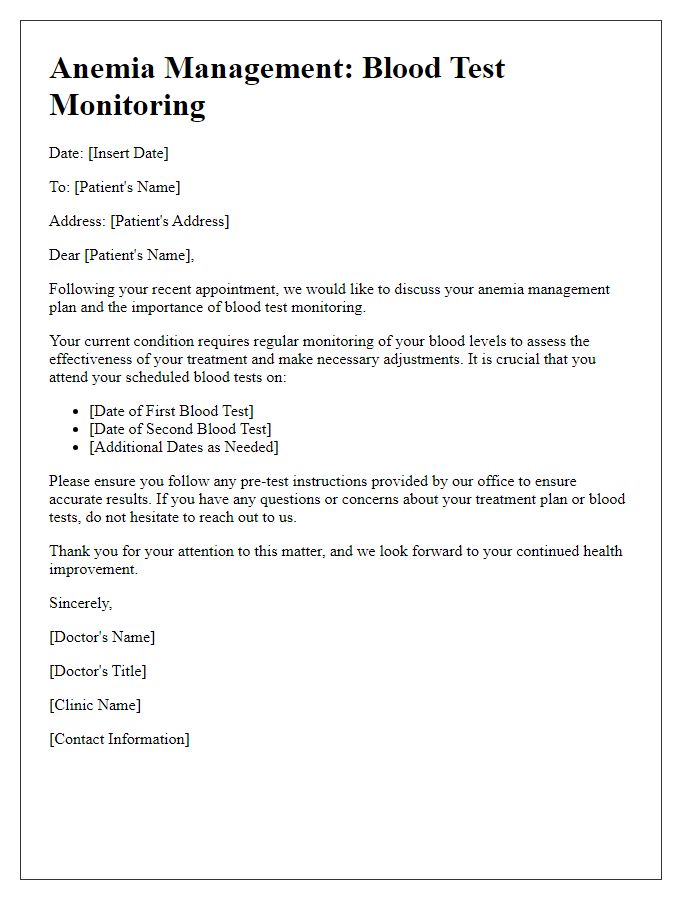
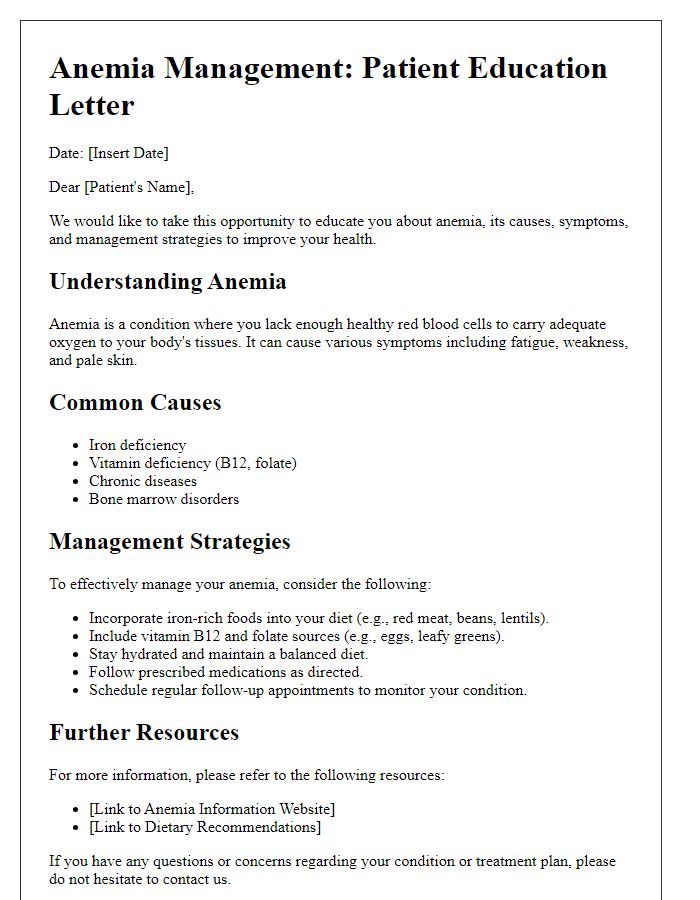
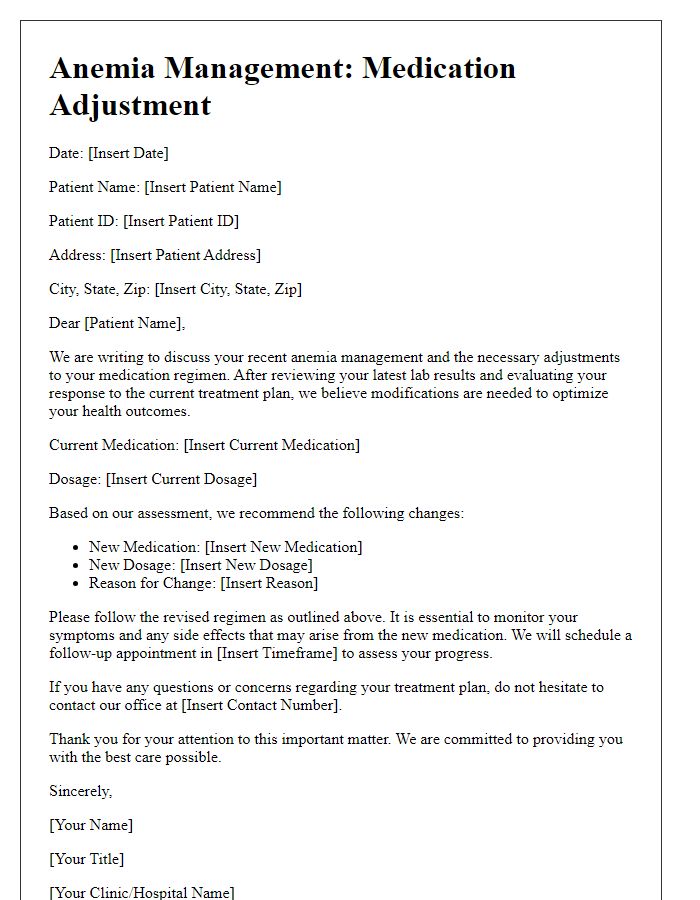
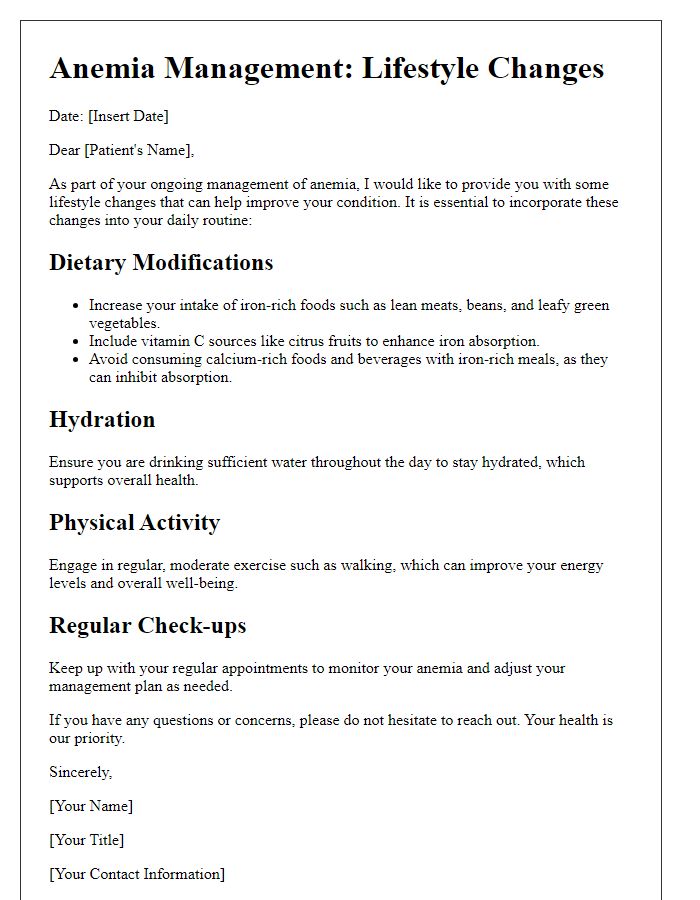
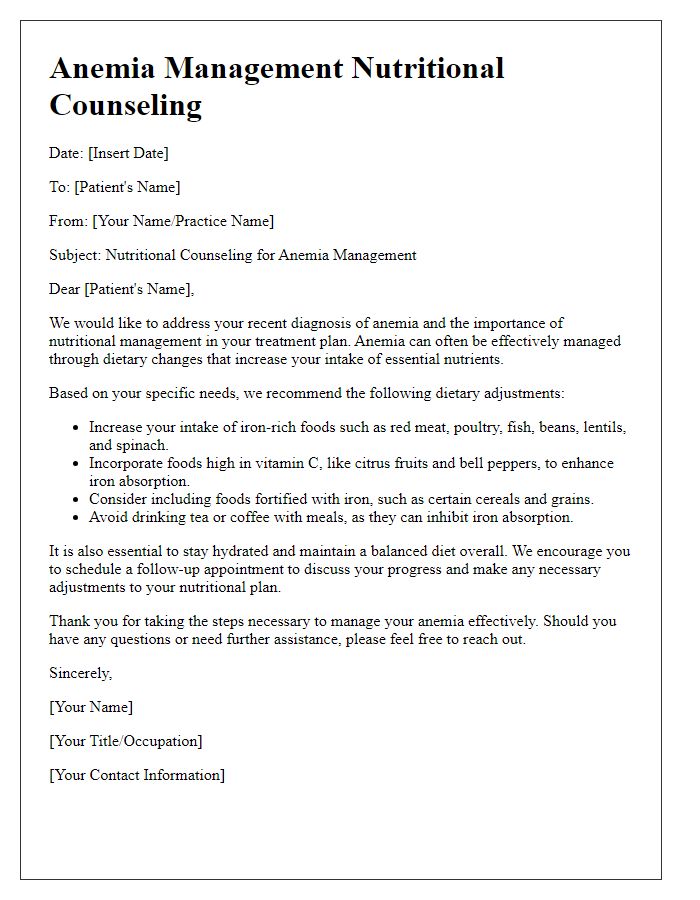
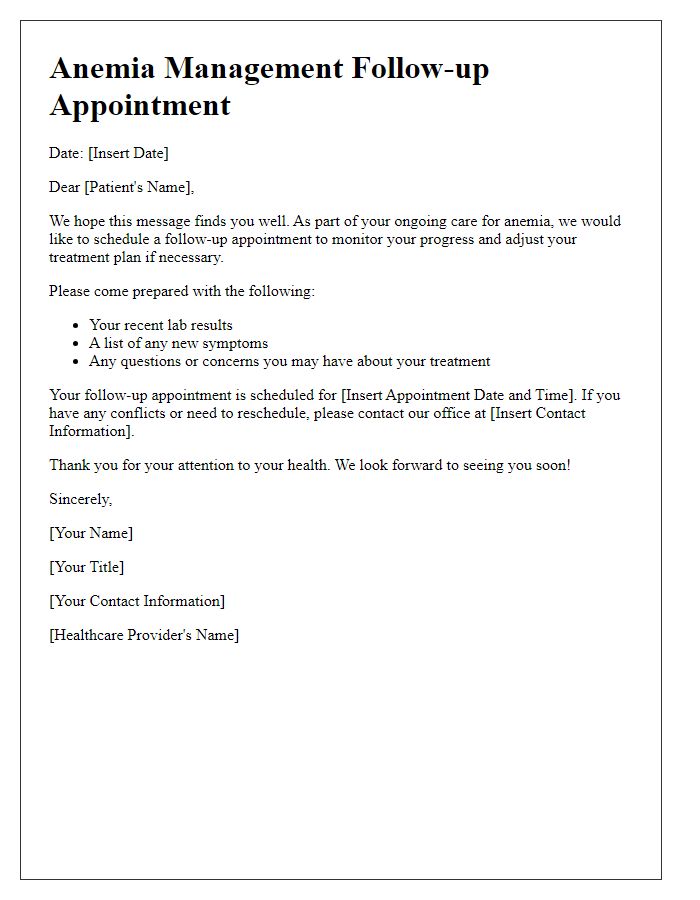
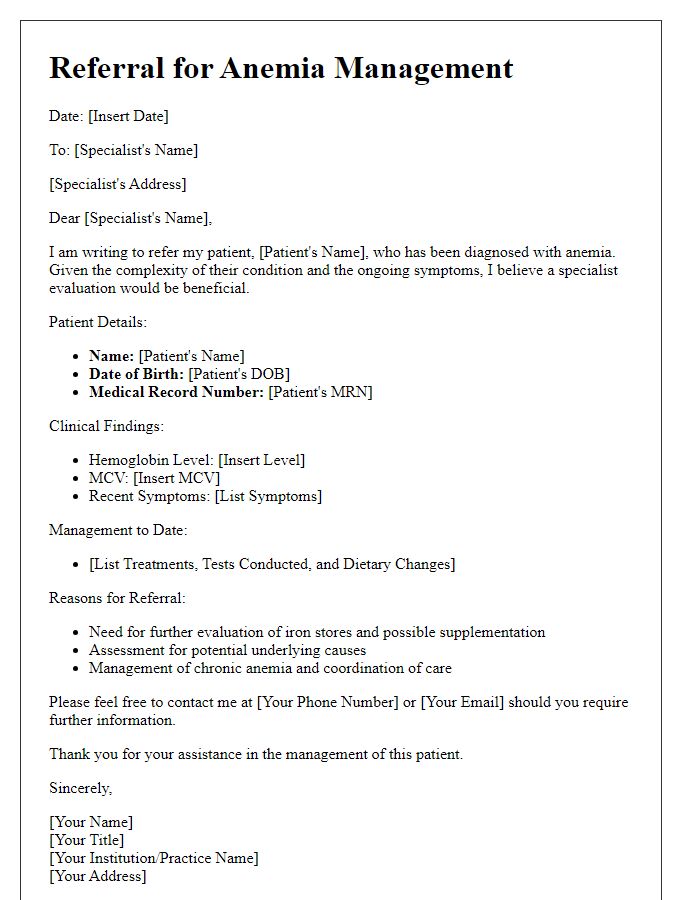
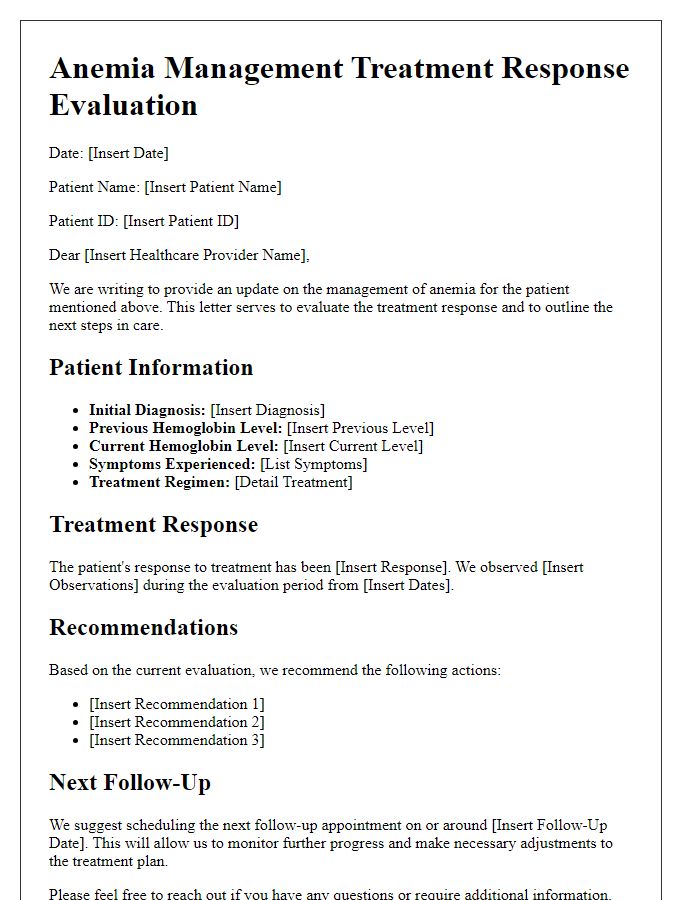


Comments